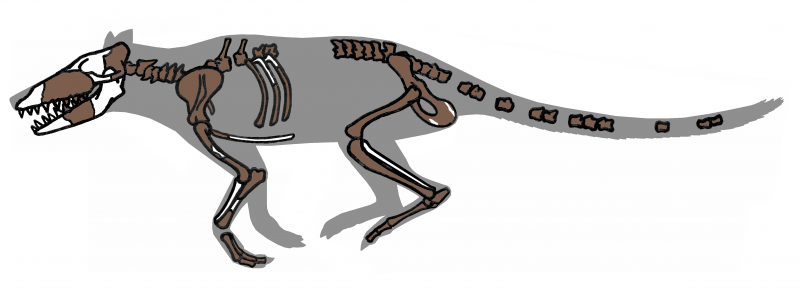
I love whales. My undergraduate thesis was on whales, specifically the evolution of their vertebral column. I was fortunate enough to spend a lot of time in the bowels of the Smithsonian and the American Museum of Natural History (not to mention days and days and days underground in a converted missile silo in Concord, Massachusetts), pulling out drawer after drawer of beautiful bones. What fascinates me, and many others, about whales is that they evolved from a group of four-limbed terrestrial mammals. Their evolutionary history, therefore, documents complete ecological transition from fully terrestrial to fully aquatic. Fossils of whales and their ancestors provide a wealth of information for how and when this transition took place, but even if we didn’t have these fossils, the bodies of modern whales provide some clues that these animals did not always look as they look now.
The most famous of these clues are the remnants of hip bones found in many species of extant (living) whales. Quite often, these bones are held up as the marquee example of vestigial structures. I have no problem with that, but there's a problem when vestigial structures are defined as evolutionary remnants that have no function. As I discussed in a previous post, the correct way to describe a vestigial structure is to say that it no longer has its original function. Whale hip bones no longer help the animals walk on land (their original function). but they do most certainly seem to have a function—and an important one at that.
Carl Zimmer, who wrote about the incredible ecological transitions of tetrapod and whale ancestors in the book At the Water’s Edge (1998), asks this rhetorical question in an essay this week for his blog The Loom: "When we see whale hips at the end of this long evolutionary history, they make more sense. They are vestiges of the terrestrial history of whales. But the fact that they still linger is also puzzling. If hips were adaptations for a vanished life, then why haven’t they vanished altogether?"
As Zimmer explains the fallacy of assigning no function to whale hipbones is…phallic.
A new study in the journal Evolution helps to answer that question. Far from being abandoned by evolution, whale hips are still evolving today. While they may not be essential for walking, they still matter a lot to whales. To see why, we have to go back to those hips of land mammals. They are important for walking on land, but they serve other purposes, too. Among other things, they anchor muscles that control the sex organs. If these muscles are anesthetized in men, for example, they have a hard time gaining an erection.
As whale hips stopped mattering to walking, they didn’t stop mattering to having sex. In male whales, the pelvis controls the penis with an especially elaborate set of muscles. In some whale and dolphin species, these muscles make the penis downright prehensile.
 Zimmer goes on to explain how a new study strongly suggests that whale hip bones are under pressure from sexual selection. What I liked so much about this article (besides the fact that it was about my beloved whales) was that Zimmer didn’t overstate the findings of the study, proclaiming that scientists have “Solved the Mystery!” or “Found the Missing Link to Understanding!” Nor did he leave the reader feeling like scientists don’t know anything about anything. Rather, he embraced the discovery and was open about what we don’t yet know. He writes,
Zimmer goes on to explain how a new study strongly suggests that whale hip bones are under pressure from sexual selection. What I liked so much about this article (besides the fact that it was about my beloved whales) was that Zimmer didn’t overstate the findings of the study, proclaiming that scientists have “Solved the Mystery!” or “Found the Missing Link to Understanding!” Nor did he leave the reader feeling like scientists don’t know anything about anything. Rather, he embraced the discovery and was open about what we don’t yet know. He writes,
Dines and his colleagues can’t say what the change in the shape and size of pelvic bone does to a whale. That would require a level of intimate observation of whale sex that is simply impossible. But they have been able to get some clues by looking at other parts of male whale sexual anatomy. The whales with big hip bones also tended to have big testicles and big penises. This pattern may mean that hip bones are evolving as part of a bigger system. Whales with more competition may be using bigger hip bones to control a longer penis to deliver more sperm to females. (The new study only considers how whale hips may be selected in males. That doesn’t necessarily mean they have no function in female whales, which have hips too. Or perhaps they are the female equivalent of male nipples, carried along for the ride. For now, the subject is too mysterious for scientists to say anything firm about it.)
Whales, sex, and a shout out to male nipples? Well said, Carl Zimmer!

